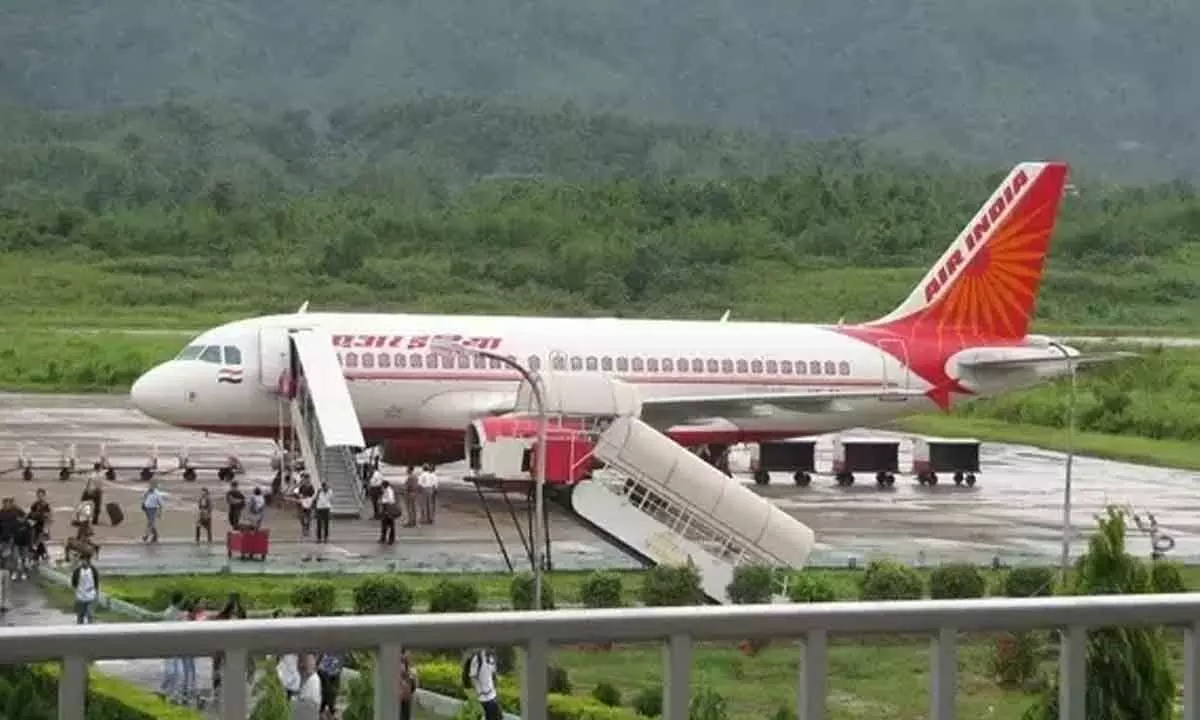Airports to give India a distinctive edge
Air passenger traffic in India is expected to rise to 860 million by 2030
image for illustrative purpose

All eyes are on Navi Mumbai airport. The project slated to open by the year-end will change the aviation landscape of the Mumbai Metropolitan region.
In the first year of its opening, it will augment the passenger capacity by 20 million passengers per annum and 90 million post completion of the final phase.
CAPA Advisory expects traffic to reach around 155 million passengers in FY2024, or 15% higher than last year. International traffic has also maintained growth in line with our annual guidance, and is expected to end the year at around 70 million passengers, despite the large number of aircraft on the ground.
Air passenger traffic in India is expected to rise to 860 million by 2030 and Indian airport operators are projected to report a 26 percent rise in revenues at $3.9 billion in the financial year 2024, according to aviation consultancy CAPA India.
“India is forecast to see domestic airport pax rise to 700 million passengers and international airport pax to 160 million passengers by financial year 2030,” CAPA India said.
For 2023-24, air passenger traffic, including domestic and international, is expected to reach 395 million, it said while presenting the outlook for the airports. Out of the total, domestic air passengers will be at 320 million from 275 million this fiscal. During this period, the international air passenger count will increase to 75 million from 58 million.
India is the third largest domestic market in the world in terms of seat capacity, but in terms of international seat capacity we are still ranked at the 18th position. Therefore, the prospect for long-term consistent growth in the market seems very strong. India’s real GDP is expected to grow to about 252 trillion rupees in FY 2030 and GDP per capita will have increased from that of a lower middle-income country to an upper middle-income country.
India is witnessing increasing urbanization, and it is expected to increase from 34.9% in 2020 to a projected 40 % in 2030. The disposable income of middle and high-income households is rising much faster than the national average. India is going to have one of the largest young populations in the World, which usually has a greater propensity to travel.
ACI Asia-Pacific DG Stefano Baronci delivering the key note address at a recent summit spoke about the role of India in the recovery of the Asia-Pacific Region. The DG shared insights on how India will contribute in helping Asia-Pacific region regain leadership at global level in the aviation sector. As a key contributor to the growth in passenger traffic from now up to 2041 (by 9%),
Capacity at most Indian airports is set to saturate between the financial years ending 2028 and 2033. This is particularly true of the privately run airports at Bengaluru, Hyderabad, Mumbai and Delhi.
"In terms of domestic traffic, India is number 3. But in terms of international (traffic), the country is ranked at 18. In spite of being the third-largest domestic market, the penetration of (international) air travel remains lowest among the top 20 domestic markets.
India's seats per capita consumption stands at 0.13, whereas the same for a country like Australia is as much as 3.11.
The long-term fundamentals for growth are very strong and have only searched the surface of international travel. We are 0.06 in terms of seats per capita consumption
"We will continue to grow as we move from (USD 4 trillion (economy) to (USD) 15 trillion...and we will be equal to the size of the United States," he said.
As far as goals for 2024 are concerned, it is to enable many more airports to be put in place, the fleet size to grow... we are getting roughly 2-5 planes a month between Air India, IndiGo and Akasa Air.”
Air India and IndiGo placing orders for 970 planes, Go First filing for voluntary insolvency proceedings, an amended insolvency framework to address aircraft lessors' concerns, and air passenger traffic touching a record high of more than 4.63 lakh in a single day in November, were among the key developments in 2023.
"As far as airlines are concerned, we need to concentrate on a great travel experience, increased OTP (On Time Performance) and make sure that we have as many aircraft in the air," the minister said.
While profitability will be uncertain, aviation consultancy CAPA Advisory said that after a long time, India has a stable airline system led by IndiGo and Air India Group.

